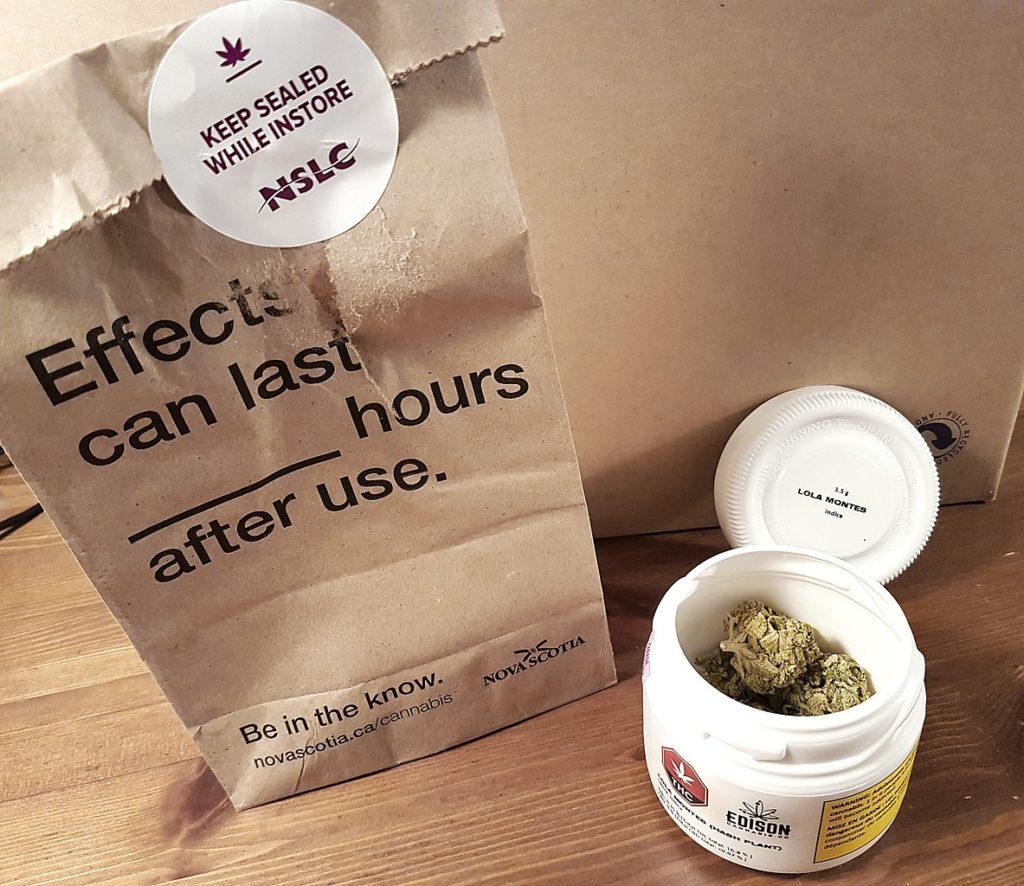Data with destiny: an interview with Canada’s stats chief

Anil Arora, the chief statistician of Canada, never planned on a long public sector career. But as he tells Matt Ross, a series of fascinating challenges have kept him in the civil service. And now he faces his biggest task yet: rewiring government to put data at the heart of decision-making
When Anil Arora first joined Statistics Canada, he recalls, “I thought I’d be there for about six months – because government wasn’t the place where you went to do innovative things and have fun.”
But Arora’s civil service career proved rather longer than anticipated. He spent 22 years with the federal statistics agency, leaving in 2010 for a series of assistant deputy minister posts. And in 2016, he returned to Statistics Canada – known as StatCan – as the country’s chief statistician. “I used to think that innovation happens outside government,” he says now. “Boy, was I wrong!”
Over the last three decades, Canada’s government statisticians – like their peers around the world – have delivered massive changes in their working practices, tools and roles. And now they face a new challenge. As Arora points out, today we live in “an economy and a society that is data-driven”; and statisticians are key players in the task of giving data an equally central role in policymaking and service delivery.
The next challenge
Policymakers, Arora explains, are eager to make use of the new data riches generated by digital technologies. “And it’s no longer: ‘Tell me about what’s going on in housing, or justice, or health’,” he says. “They’re looking at the intersections between them – so it’s about how housing relates to mental health, or how the built environment impacts on quality of life.”
“The insights locked in those data sources are going to transform the way in which we use our precious resources to drive the results that our citizens expect of us in government,” he adds. “Statistics agencies have to step up.”
In part, this means updating how statistics bodies carry out their traditional roles: 70% of Canadians filled out the last census online, he points out. But statisticians are also grappling with two much wider challenges: making full use of the ever-expanding flows of public data; and expanding their work into new fields.
Crime data, provided by criminals
Those new fields include areas where statisticians have long struggled to gather reliable data, such as criminal activity. Traditionally, governments have measured crime via public surveys and police reports; but StatCan has developed ways of gathering information from people engaged in illegal activities.
The agency has, for example, devised a method for assessing the street price of cannabis. Though the drug was legalised in 2018, it remains illegal to buy it from an unlicensed supplier – but without good information on black market prices, policymakers risk making poor decisions on licensing and taxation.
StatCan’s solution was a website that, promising anonymity, asks citizens for information on the quantity, price and rough location of their purchases. “We let them know that we don’t track IP addresses or want their specific information,” Arora explains. “In the first week, we had 5000 responses; in a month, we had just under 20,000.”
This approach generated a lot of data very quickly, he adds. And StatCan was able to benchmark it by testing for trace cannabis elements in local waste water discharges: the website data largely explained the gaps between regulators’ information on licensed sales and the results of local water tests, validating its findings (see box). So now policymakers know that black market cannabis sells for about half the price charged by legal suppliers – and can alter course to suit.
Spotting the danger signs
StatCan has found an equally innovative way to help tackle Canada’s opioids abuse problem. Working with community leaders and service providers in British Columbia, the agency first identified people who’d died as a result of opioids use, then “walked back and saw what their lives looked like six months, a year prior to that.” Pulling together data from criminal justice, health, taxation and other sources, they tracked individuals’ interactions with public services – collating a set of danger signs that will help public servants to spot and help people with an addiction problem.
This kind of data “helps separate stigma and fiction from fact,” Arora comments. “For statistical agencies, in some cases it’s just as important to provide expertise as official statistics.”
There is, meanwhile, endless potential to expand the range and quality of official stats. Satellite data, for example, can track where crops are being planted and harvested – reducing the need to gather information from farmers. And the daily imagery supplied by satellites can help planners assess the need for new infrastructure, “substituting for the burden of going out and surveying establishments”. A small army of volunteers, he adds, is geo-tagging structures around Canada – building an ever more granular picture of the country.

Tech and tools
So what new capabilities and relationships will statistics agencies have to develop, equipping them to meet the ever-growing demand for data-driven insights and advice?
The ability to use emerging digital technologies is an obvious one: StatCan is running 40-50 projects to explore the potential of machine learning and artificial intelligence. These technologies could, for example, strip much of the manual work out of interpreting and classifying raw data: early results suggest that “the quality is just as good – in some cases, even better – than the work done by humans making judgement calls,” Arora comments.
Then there’s the informatics systems required to hold, manage and process data. Nowadays, StatCan’s informatics are provided by Shared Services Canada (SSC): in the last couple of years, Arora notes, the central IT service has boosted his agency’s processing power by 60% and its storage capacity by half, whilst improving cyber security across government.
This has not always been an easy relationship: the previous chief statistician, Wayne Smith, quit in protest at SSC’s expanding role – arguing that its services were poor and StatCan’s independence was under threat.
Asked how SSC has performed since 2016, Arora says they’ve been a “good partner” to StatCan. “We have to have the right governance, to escalate issues, to make sure the resources are there,” he continues. “No system is perfect, but they’re working through it – and as they continue to renew their leadership, to invest in their own capabilities, I think we’re benefiting. And I think we’ve also stepped up in being an equally good partner in return.”
Partners, near and far
On the partnerships side, Arora has worked with Canada’s chief information officer and chief data officer to develop a federal public service data strategy. Currently under consultation, this focuses on developing the infrastructure, expertise and governance systems to best “use the data that’s locked in our systems to bring greater value to Canadians.”
Meanwhile, he’s busy on the international stage. As the demands on national statistics bodies grow, he says, “that forces us into working together as a collective, to see how we can learn from each other and keep up with the pace at which our economies and societies are evolving.” StatCan is active in the World Data Forum and many UN working groups, with Arora chairing the High-Level Group for the Modernisation of Official Statistics.
There’s another job for the agency, he suggests, in improving understanding of the many different types of data. “Data as a term is yearning for a finer classification,” he argues: civil servants need to understand the dangers and sensitivities around handling different kinds of data, enabling them to create value whilst minimising risk. “There’s aggregate data, synthetic data, public use microdata, de-identified data; then there’s raw data, and so on and so on,” Arora comments. “As we get more sophisticated, the taxonomy that we use for data is going to have to become more refined.”

Statistician, measure thyself
Finally, Arora is developing StatCan’s work with businesses and departments – helping them to strengthen data-gathering and management. One client on this front is the Treasury Board, which handles civil service employment and HR issues. The board has taken over responsibility for the Public Service Employee Survey, he explains, and StatCan is “working with central agencies to see how we can put the myriad of information that exists on our employees to greater use.”
When the Board examines its data on civil service diversity, it’ll find some positive results. Global Government Forum’s 2017 Women Leaders Index, for example, discovered that Canada has the highest proportion of female senior civil servants – at 46.4% – of any country in the G7 or EU. And StatCan’s research has found that the ethnic diversity of new civil servants closely matches that of the wider labour pool, giving recruitment a clean bill of health.
At senior levels, though, there’s more work to do on ethnic diversity: “We’re seeing progress,” Arora comments. “Could it be better? Of course.” Periods of financial constraint in the 1990s and early 2000s hampered minorities’ progress up through the ranks, he suggests, explaining that the senior cadre is working on ways to boost representation by reforming selection, promotion and training.
There’s more to this issue than improving the raw numbers, he adds. “Somebody once said that the difference between diversity and inclusion is that with diversity you take somebody to a party; but with inclusion, you ask them to dance. So you can have representation, but how do you gain from those new perspectives?”
Including inclusion
But if the challenge goes beyond simple metrics, Arora – a statistician through and through – believes that data can nonetheless be used to measure the subtle difference between diversity and inclusion. Senior officials are, he explains, working on a set of indicators to “measure the impact of the inclusivity, if you like, of a public service”, with the goal of spotting any link with organisational performance.
Some businesses “have developed inclusion indices, and we’re doing some preliminary work to see if we can bring those kinds of measures to the federal public service,” he explains. By measuring the extent to which minorities are fully involved in activities such as decision-making, then linking those metrics to outcomes, civil service leaders may be able to demonstrate that “there’s a strong business case for inclusion, and that there’s a real advantage in making sure that diversity is valued and embedded in our culture.”
It’s this kind of project that, more than three decades after Arora decided to spend a few months in the civil service, keeps him continually entertained, engaged and enthused. “Thirty-one years on, I’m still having fun and we’re still doing innovative things,” he concludes. “It’s been a whole career of trying to find innovative ways to serve Canadians better – and what a wonderful, fulfilling journey it’s been.”
Anil Arora on learning from overseas
To help our readers get the best out of Global Government Forum, we ask interviewees five standard questions – four seeking practical advice and opinions, and one to reveal something a little more personal. This is an edited version of Arora’s answers.
Can you name one lesson or idea from abroad that’s helped you or your colleagues?
“When we went through the legalisation of cannabis, we thought about how we could measure the illegal market. And so our innovative folks looked around the world and found the solution: you can measure the content of [cannabis component] THC in the waste water; and if you know the geographical area that a water treatment plant serves, you can get a denominator of what is actually being consumed in that area.
“So if you subtract the regulated amount of cannabis that is being bought in that area, and you know what the denominator is, the balance is the illegal market. That was quite innovative work being done in European and other countries.”
Are there any projects or innovations from Canada that might be valuable to your peers overseas?
“One interesting area that we’re working on is how to value data – so that as we become a data-driven society, just as we have natural resource capital and human capital, we also have data capital.
“If you look at some of the biggest companies in the world today, their greatest asset is data – so how do we get a better sense of its true worth and how it’s being traded, both globally and domestically?”
How can we improve the ways in which senior public officials work with and learn from their peers overseas?
“In working groups at the UN, the OECD, the IMF and so on, and in initiatives such as the Sustainable Development Goals, we’re seeing different disciplines – like data science, geospatial and statistics – coming together. At the High-Level Group for the Modernisation of Official Statistics, for example, we’re bringing together providers and users of data with the kinds of expertise that will drive insights and value.”
What are the biggest global challenges in the field of statistics over the next few years?
“If you look at the platforms that let people share rights or rent out their apartment, these are global: the software’s in one country, the finance may be in another. So the household sector might be producing income at a much greater rate than it did before, and there’s a challenge there for statistical agencies to figure out how to value that in the overall system of national accounts and GDP.
“Similarly, climate change has no borders. How do we get a better sense of how to develop economic and environmental accounting that captures the whole picture? To address these global challenges, statistical officers have an obligation and an opportunity to come together and get a sense of the challenge that we’re facing.”
What is your favourite book?
“One book that left an impression on me is ‘Against the Gods: a Remarkable Story of Risk’ by Peter Bernstein. It’s incredible: it charts the history of the role of statistics in society, and talks about sampling probability – which brought us a whole new way of looking at things. When that happened, the risk structure used in our economic system and our society was profoundly changed, because we could measure risk; and that enables people to take risks.
“Now we’re on the verge of a data revolution, and the coming years will present an exciting opportunity to unlock the insights that data holds for us. Statistics hasn’t always been seen as the sexiest discipline, but I think it’s going to play a much more prominent role going forward.”























